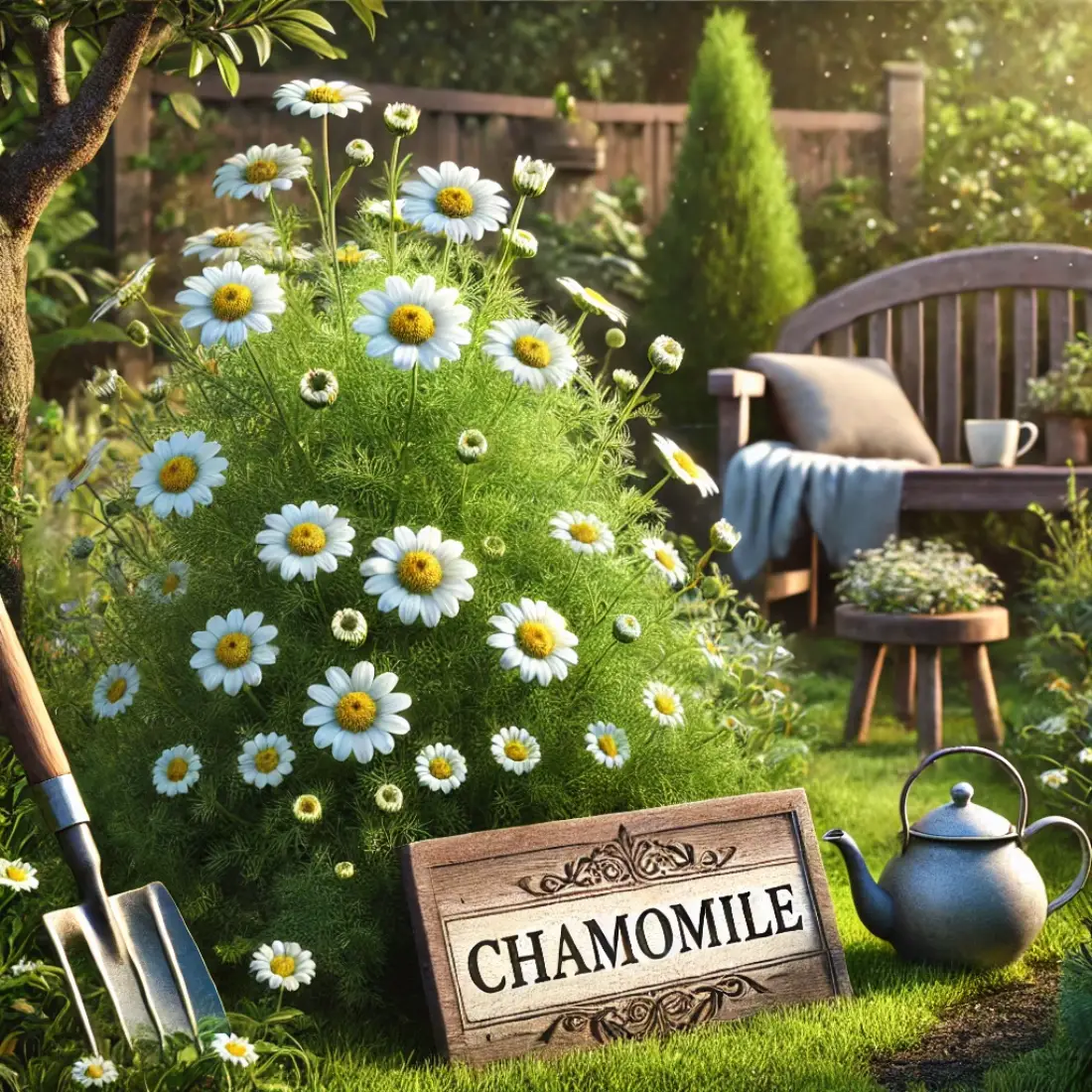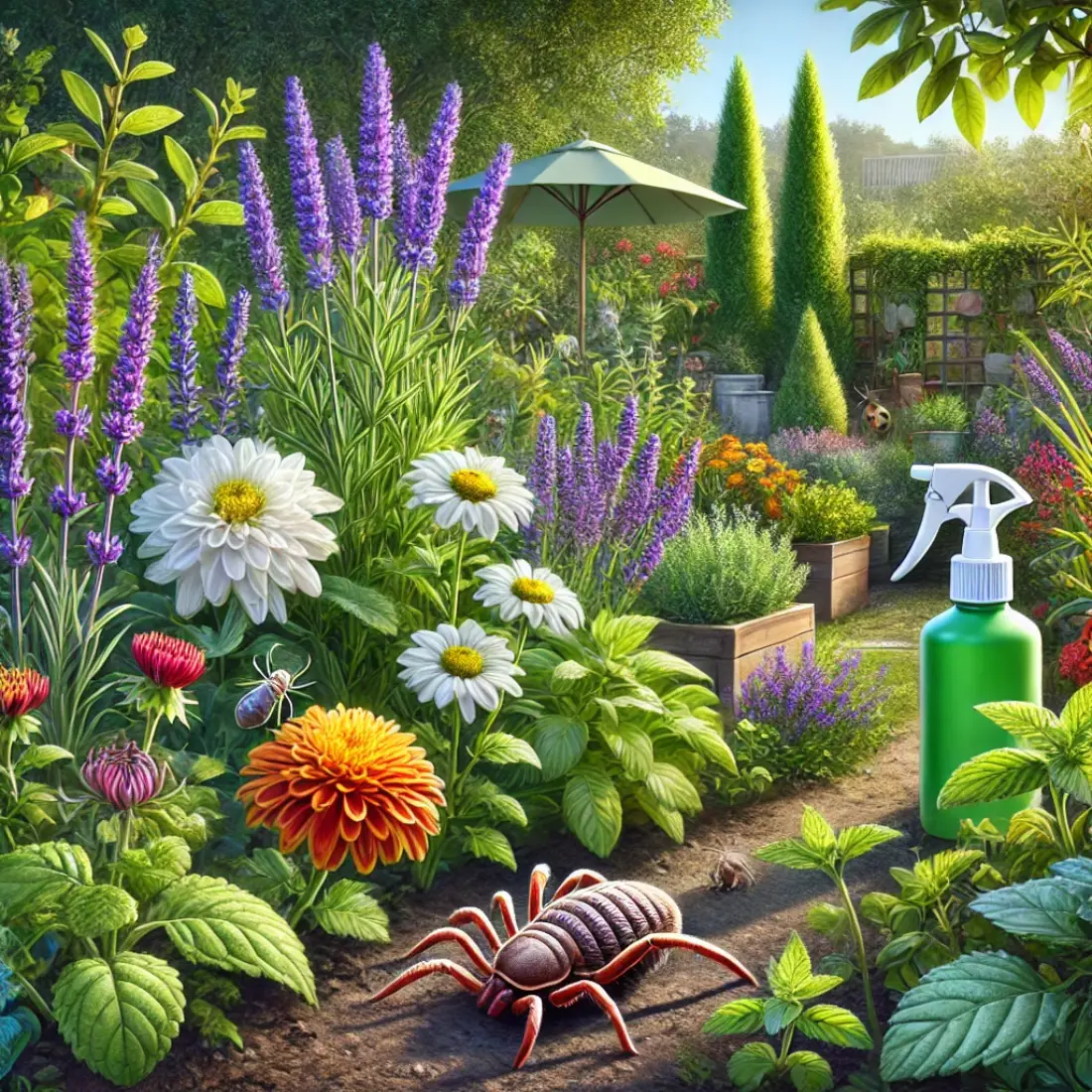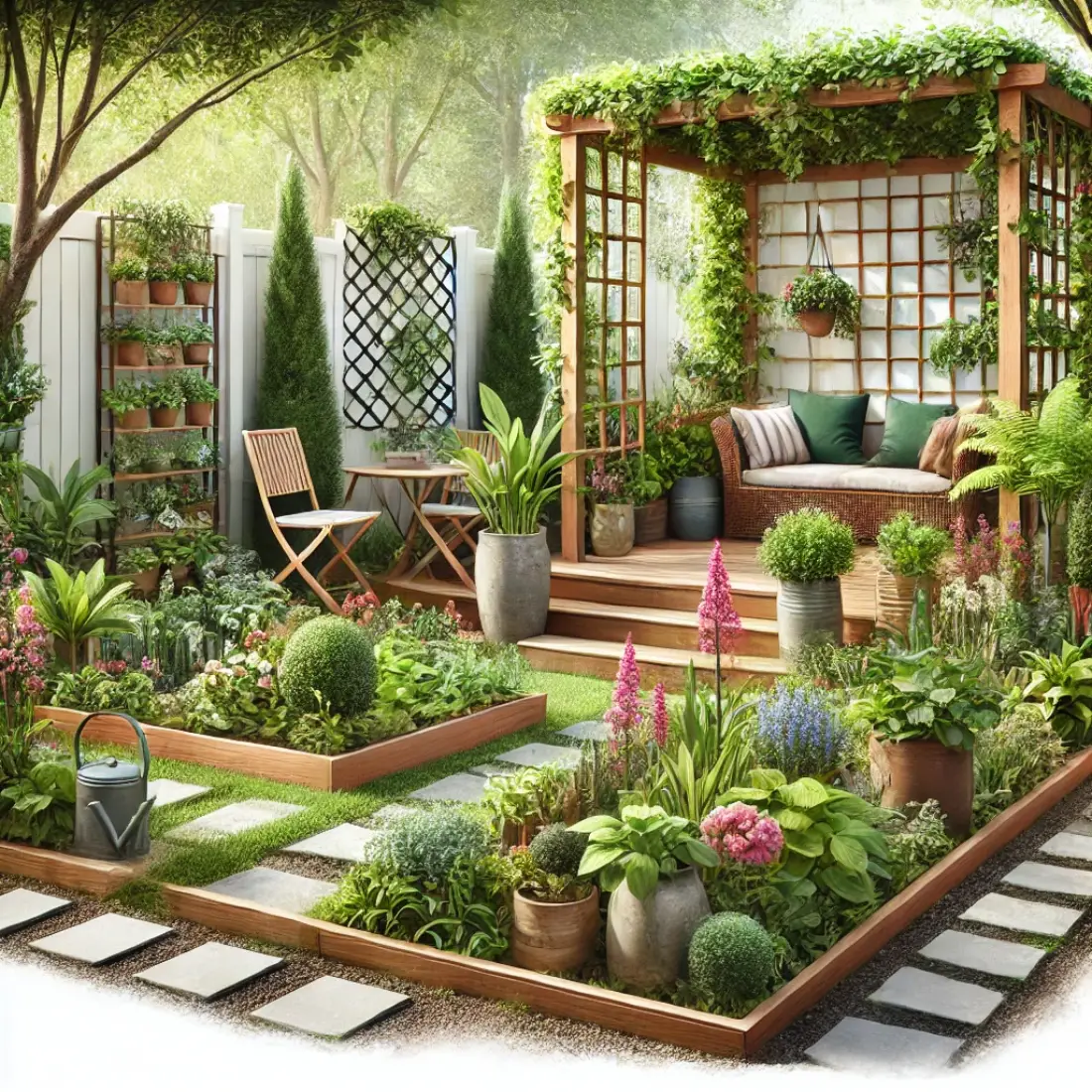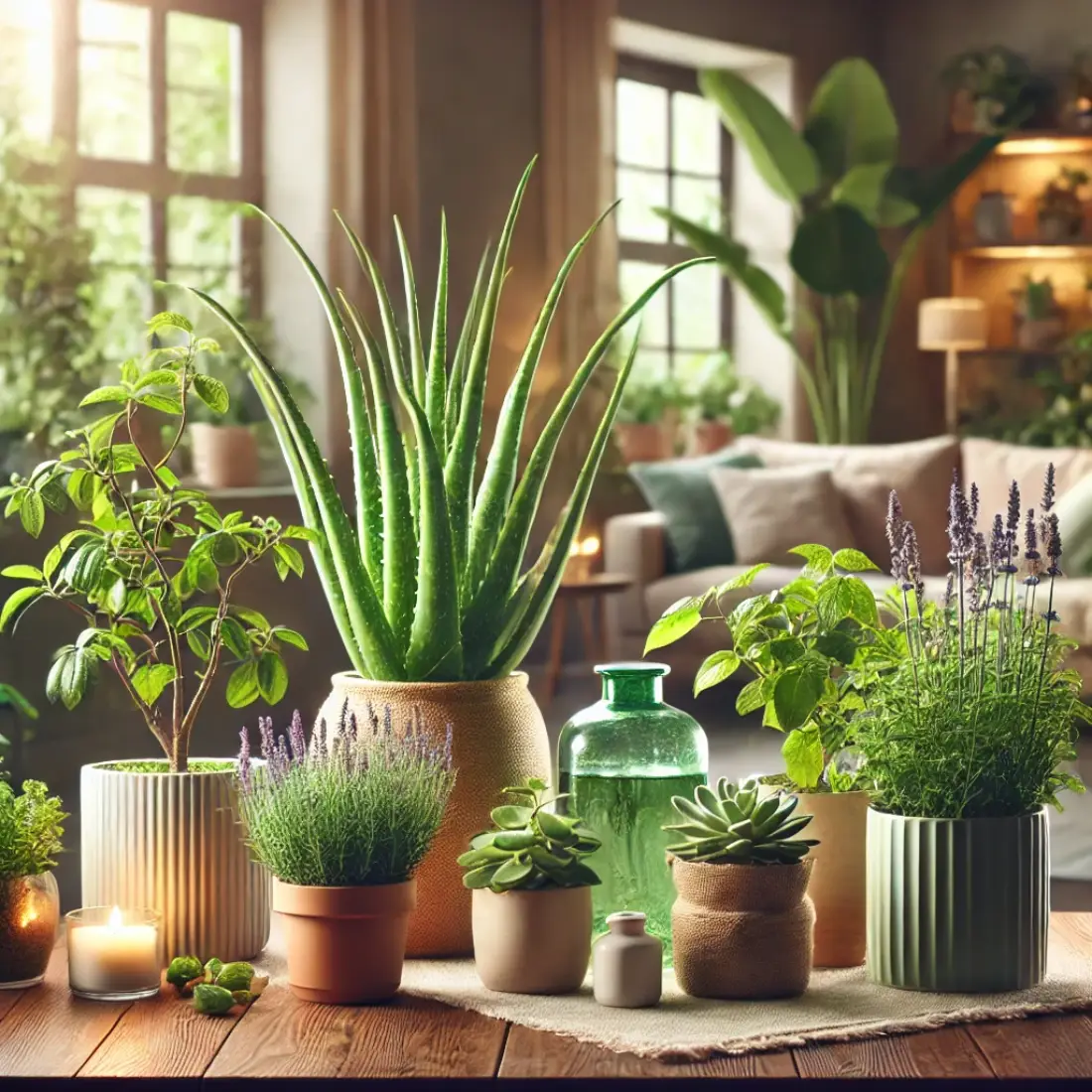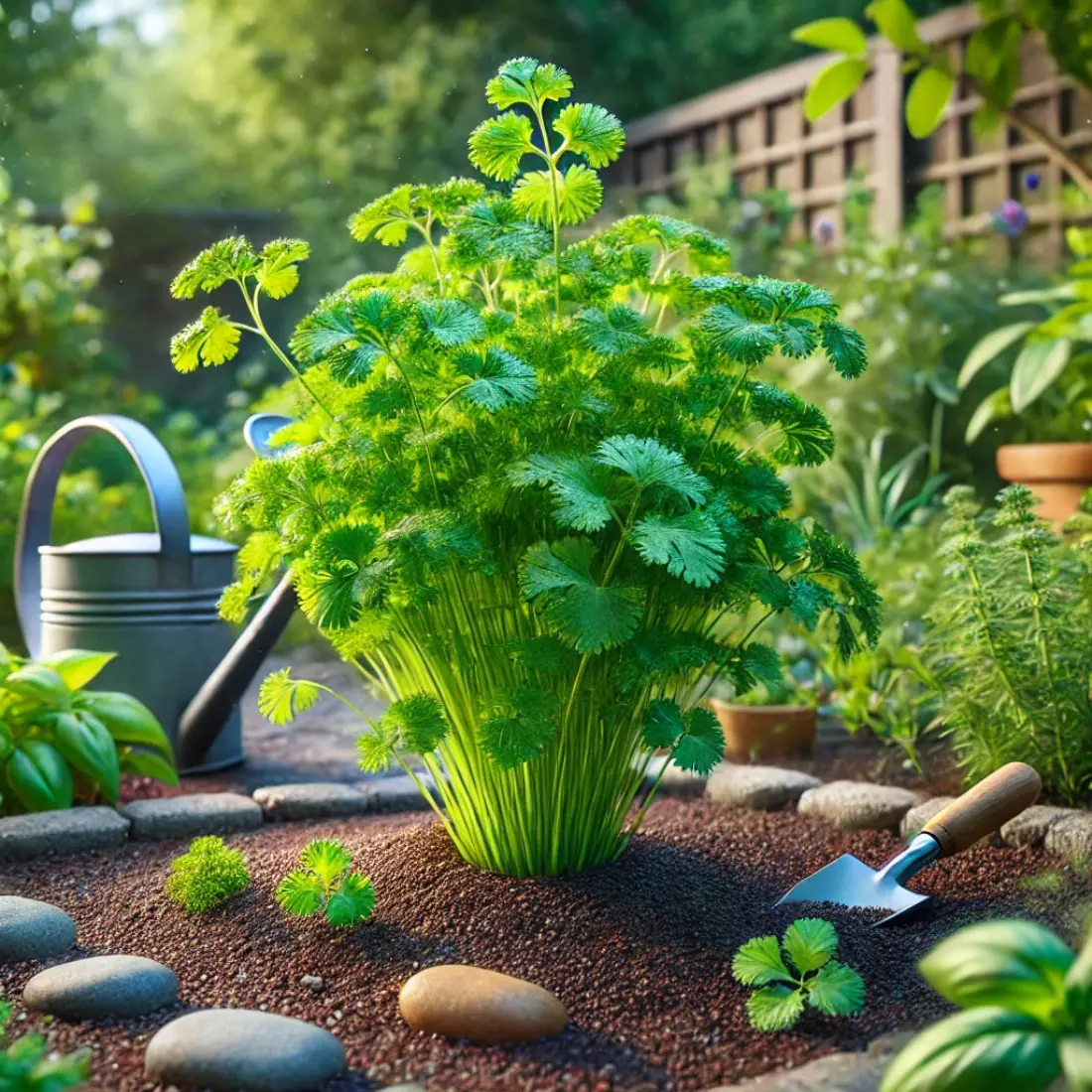Chamomile, a beloved herb known for its calming properties and delicate flowers, is a staple in many gardens and herbal medicine cabinets. Its versatility extends from soothing teas to beneficial skincare products, making it a valuable addition to any home. Growing chamomile is straightforward, and with the right tips, you can cultivate this herb to enjoy its myriad of benefits.
- Easy to Grow: Chamomile is a low-maintenance plant that thrives in various conditions, making it ideal for beginner gardeners.
- Health Benefits: Chamomile is renowned for its medicinal properties, including aiding digestion, improving sleep, and reducing anxiety.
- Skincare Uses: Chamomile is a popular ingredient in skincare products due to its anti-inflammatory and soothing effects on the skin.
- Culinary Versatility: Beyond tea, chamomile can be used in cooking to add a unique flavor to dishes.
- Environmental Benefits: Chamomile attracts beneficial insects and can improve soil health, making it an excellent companion plant in gardens.
- Pet-Friendly: Chamomile can be used safely for pets to treat minor ailments and improve their well-being.
Types of Chamomile: German vs. Roman
German Chamomile (Matricaria chamomilla)
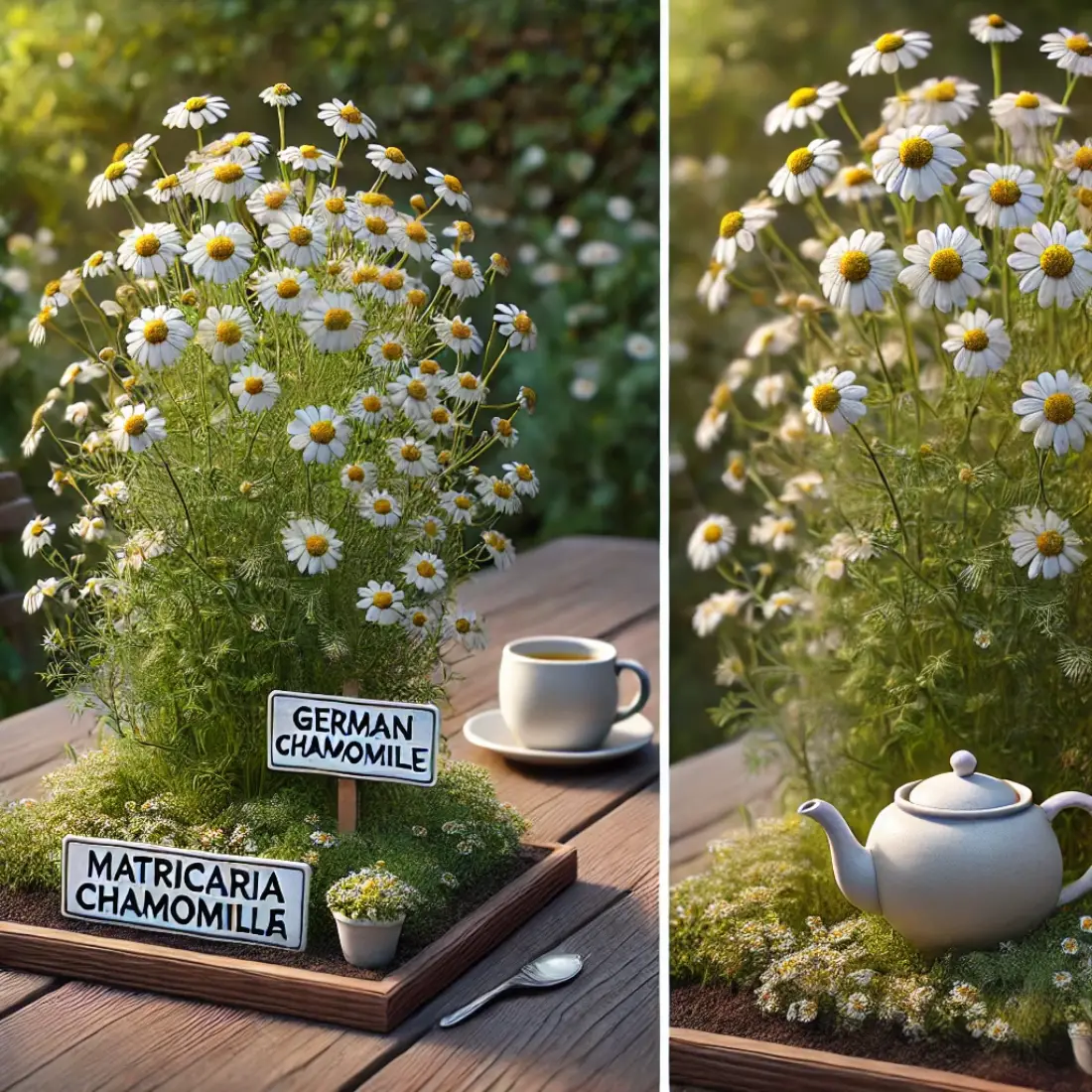
- Annual Plant: German chamomile completes its life cycle in one season.
- Growth Habit: Grows upright, reaching up to 24 inches tall.
- Flowering: Produces small, white, daisy-like flowers with yellow centers.
- Uses: Commonly used for tea and essential oils due to its high concentration of beneficial compounds.
Roman Chamomile (Chamaemelum nobile)

- Perennial Plant: Roman chamomile returns year after year if properly maintained.
- Growth Habit: Grows low to the ground, forming a dense mat of foliage, typically 6-12 inches tall.
- Flowering: Similar daisy-like flowers, but larger than German chamomile.
- Uses: Often used as a ground cover and in ornamental gardens, also suitable for tea and essential oils.
Ideal Growing Conditions
Climate
- Temperature: Chamomile thrives in moderate climates. Ideal temperatures range from 60°F to 68°F (15°C to 20°C).
- Frost Tolerance: German chamomile is somewhat frost-tolerant, while Roman chamomile is more sensitive to frost and requires protection in colder climates.
Location
- Sunlight: Chamomile prefers full sun but can tolerate partial shade. Ensure at least 4-6 hours of sunlight daily for optimal growth.
- Air Circulation: Good air circulation helps prevent fungal diseases and promotes healthy growth.
Soil and Sunlight Requirements
Soil
- Type: Well-drained, sandy or loamy soil is ideal for chamomile.
- pH Level: Chamomile prefers slightly acidic to neutral soil, with a pH range of 5.6 to 7.5.
- Nutrients: Chamomile doesn’t require highly fertile soil but benefits from light compost or organic matter mixed into the soil before planting.
Sunlight
- Full Sun: Chamomile thrives best in full sun, which promotes robust growth and abundant flowering.
- Partial Shade: In hotter climates, partial shade during the hottest part of the day can prevent the plants from getting scorched.
Planting Chamomile
Plant chamomile in early spring after the last frost for optimal growth. Choose a sunny spot with well-drained soil, either in the garden or in containers.
Chamomile seeds are cost-effective and easy to sow directly into the soil. Alternatively, purchasing seedlings offers a head start, reducing the germination period and allowing for faster establishment.
Prepare the Soil:
- Clear the Area: Remove weeds and debris from the planting site.
- Loosen the Soil: Use a garden fork or tiller to loosen the soil to a depth of 8-10 inches.
- Amend the Soil: Mix in compost or well-rotted manure to improve soil fertility and drainage.
Sowing Seeds:
- Direct Sowing: Scatter chamomile seeds evenly over the soil surface.
- Covering Seeds: Lightly cover the seeds with a thin layer of soil or compost, about 1/4 inch deep.
- Watering: Gently water the soil to keep it moist but not waterlogged until germination.
Planting Seedlings:
- Dig Holes: Dig small holes spaced about 8-10 inches apart for each seedling.
- Transplant Seedlings: Place each seedling in a hole and cover the roots with soil, firming it gently around the base.
- Watering: Water the seedlings thoroughly after planting.
Spacing and Layout:
- Row Spacing: If planting in rows, space the rows about 18-24 inches apart.
- Cluster Planting: For a more natural look, plant in clusters or drifts.
Initial Care:
- Mulching: Apply a thin layer of mulch around the plants to retain moisture and suppress weeds.
- Watering: Keep the soil consistently moist during the early stages of growth.
Caring for Chamomile Plants
Watering:
- Frequency: Water chamomile regularly, especially during dry periods. However, avoid overwatering as chamomile prefers slightly dry conditions.
- Method: Water the base of the plants rather than the leaves to prevent fungal diseases.
- New Plants: Keep the soil consistently moist for newly planted seeds and seedlings until established.
Fertilizing:
- Initial Fertilizer: Incorporate a balanced, organic fertilizer or compost into the soil before planting.
- Maintenance: Chamomile doesn’t require heavy feeding. A light application of compost or a balanced liquid fertilizer once or twice during the growing season is sufficient.
Common Pests:
- Aphids: Small, green or black insects that suck sap from the plants. Control them with insecticidal soap or by introducing beneficial insects like ladybugs.
- Spider Mites: Tiny red or yellow mites that cause yellowing and webbing on leaves. Mitigate by spraying with water or using insecticidal soap.
Common Diseases:
- Powdery Mildew: White, powdery fungus on leaves. Prevent by ensuring good air circulation and avoiding overhead watering. Treat with fungicidal sprays if necessary.
- Root Rot: Caused by overwatering or poor drainage. Improve soil drainage and avoid waterlogging.
Preventative Measures:
- Plant Spacing: Ensure adequate spacing between plants for air circulation.
- Cleanliness: Remove plant debris and weeds that can harbor pests and diseases.
- Rotation: Rotate crops annually to prevent soil-borne diseases.
Pruning:
- Timing: Prune chamomile plants after flowering to encourage new growth and a second bloom.
- Method: Use sharp, clean scissors or pruning shears to cut back the stems by about one-third.
Deadheading:
- Purpose: Remove spent flowers to promote continuous blooming and prevent the plant from self-seeding excessively.
- Technique: Pinch or cut off the dead flowers just above the nearest set of leaves.
Chamomile in Containers
Growing chamomile in containers is a great option for those with limited garden space or for adding a charming touch to patios and balconies. Chamomile adapts well to container gardening, provided its basic needs are met.
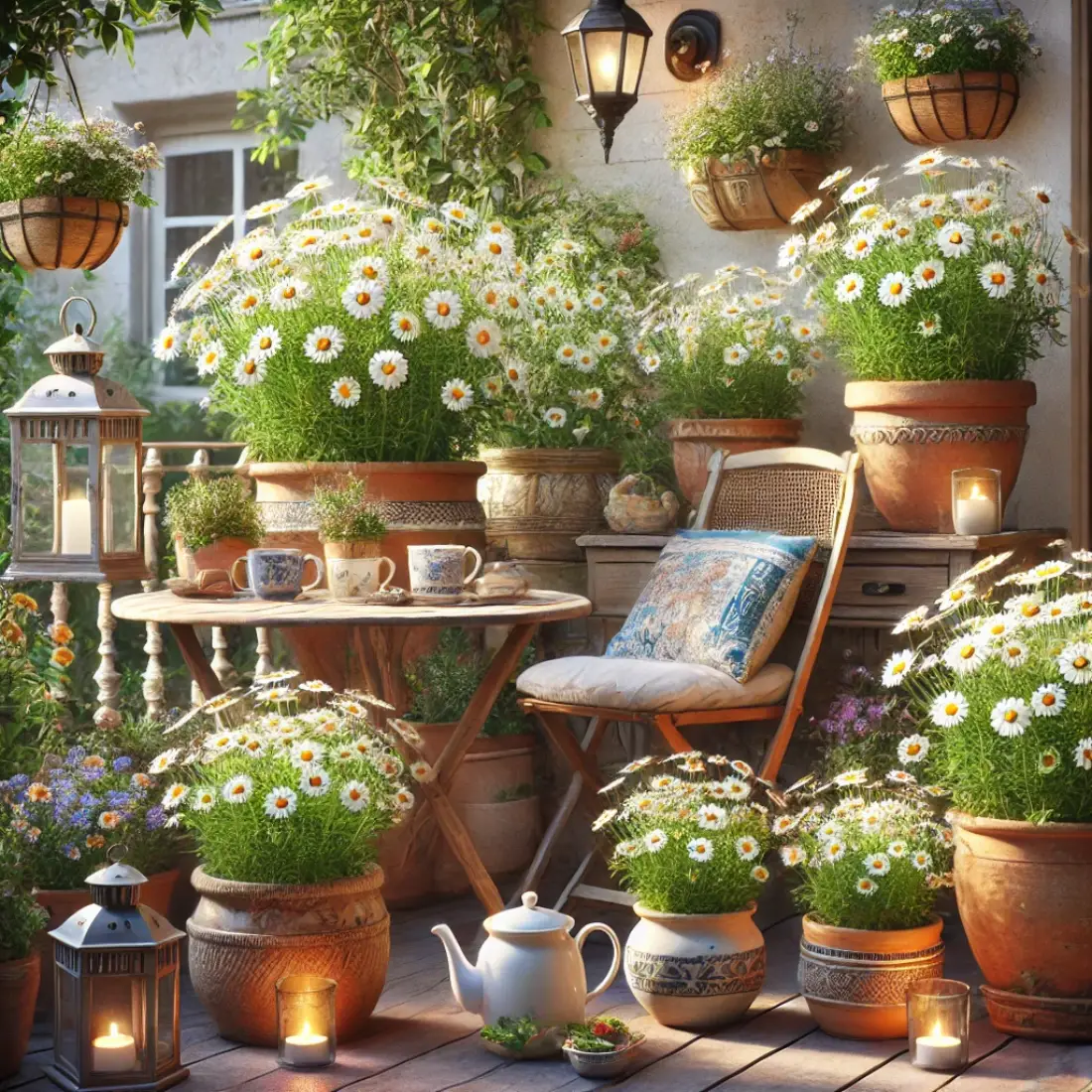
Container Size:
- Size Requirements: Choose a pot that is at least 12 inches in diameter and 8-10 inches deep to accommodate chamomile’s root system.
- Drainage: Ensure the pot has drainage holes to prevent waterlogging, which can cause root rot.
Soil Mix:
- Type: Use a well-draining potting mix. A mix formulated for herbs or vegetables works well.
- Amendments: Mix in some sand or perlite to improve drainage. Adding a bit of compost can also help provide nutrients.
Location:
- Sunlight: Place the container in a spot where it receives at least 4-6 hours of sunlight daily. A south-facing location is ideal.
- Air Circulation: Ensure good air flow around the pot to prevent fungal diseases.
Watering:
- Frequency: Water the chamomile when the top inch of soil feels dry. Container plants dry out faster than those in the ground, so monitor soil moisture regularly.
- Method: Water deeply until it runs out of the drainage holes, ensuring the entire root system gets moisture.
Fertilizing:
- Schedule: Feed the chamomile with a balanced organic fertilizer every 4-6 weeks during the growing season. Use diluted fish emulsion or compost tea for a natural fertilizing.
Maintenance:
- Pruning: Trim back the plants after flowering to encourage bushier growth and additional blooms.
- Deadheading: Regularly remove spent flowers to keep the plant looking tidy and to encourage continuous blooming.
Overwintering:
- Indoors: If you live in a region with harsh winters, bring the container indoors to a sunny window before the first frost.
- Outdoor Protection: In milder climates, insulate the pot with bubble wrap or move it to a sheltered location to protect against cold snaps.
Environmental Benefits of Chamomile
Chamomile as a Companion Plant
Chamomile is often used as a companion plant in gardens due to its beneficial effects on surrounding plants. Its presence can improve the health and growth of neighboring plants.
- Pest Deterrent: Chamomile emits a scent that repels common garden pests such as aphids and whiteflies.
- Beneficial Insects: Attracts beneficial insects like ladybugs and hoverflies, which prey on harmful pests.
- Neighboring Plants: Grows well with plants like cabbages, onions, and mint, enhancing their flavor and growth.
Attracting Beneficial Insects
Chamomile flowers attract a variety of beneficial insects that contribute to a healthy garden ecosystem.
- Pollinators: The daisy-like flowers attract bees, butterflies, and other pollinators, which are crucial for plant reproduction.
- Predatory Insects: Attracts predatory insects that help control pest populations naturally, reducing the need for chemical pesticides.
Soil Health and Biodiversity
Chamomile can positively impact soil health and contribute to biodiversity in your garden.
- Soil Conditioning: Chamomile plants have deep roots that help aerate the soil, improving its structure and drainage.
- Nutrient Cycling: Chamomile can accumulate minerals like calcium and potassium, which benefit the soil and other plants when chamomile plants are composted.
- Biodiversity: By attracting a variety of insects and beneficial organisms, chamomile promotes a more biodiverse garden environment.
Harvesting Chamomile
Best Time to Harvest
Timing: The best time to harvest chamomile flowers is in the morning, after the dew has dried but before the sun is too hot. This is when the essential oils in the flowers are at their peak.
Season: Chamomile typically blooms in early to mid-summer. Harvest when the flowers are fully open but before the petals begin to droop.
Techniques for Harvesting Flowers
Hand Harvesting:
- Method: Use your fingers to gently pinch off the flower heads. Avoid pulling the entire plant to ensure it continues producing more blooms.
- Tools: Small garden shears or scissors can also be used to snip the flowers, making the process quicker and more efficient.
Frequency: Regular harvesting encourages the plant to produce more flowers. Aim to harvest every few days during the peak blooming period.
Storing and Drying Chamomile
Drying:
- Method: Spread the harvested flowers in a single layer on a clean, dry surface. A mesh screen or drying rack works well for this purpose.
- Location: Place the flowers in a warm, dry, and well-ventilated area out of direct sunlight. Good air circulation helps prevent mold.
- Duration: Allow the flowers to dry for about 1-2 weeks. They are ready when they feel dry and crisp to the touch.
Storing:
- Containers: Store the dried chamomile flowers in an airtight container, such as a glass jar with a tight-fitting lid.
- Environment: Keep the containers in a cool, dark place to preserve the flowers’ potency and flavor.
- Shelf Life: Properly stored dried chamomile can last for up to one year.
FAQs about Chamomile
What is the best time to plant chamomile?
The best time to plant chamomile is in early spring after the last frost has passed. This allows the plants to establish themselves during the cool, moist conditions of spring.
How often should I water chamomile?
Water chamomile when the top inch of soil feels dry. Typically, this means watering once a week, but frequency may vary depending on climate and soil conditions.
Can I grow chamomile indoors?
Yes, chamomile can be grown indoors if provided with sufficient light. Place the container in a sunny window where it will receive at least 4-6 hours of sunlight daily.
How do I make chamomile tea?
To make chamomile tea, steep 1-2 teaspoons of dried chamomile flowers in hot water for 5-10 minutes. Strain the flowers and enjoy the tea hot or cold.
Are there any side effects of chamomile?
Chamomile is generally safe, but some individuals may experience allergic reactions, especially if they are allergic to plants in the Asteraceae family. Always consult a doctor before using chamomile medicinally.
What is the difference between German and Roman chamomile?
German chamomile (Matricaria chamomilla) is an annual plant that grows upright and is commonly used for tea and essential oils. Roman chamomile (Chamaemelum nobile) is a perennial plant that forms a low-growing mat and is often used as a ground cover.
How do I dry chamomile flowers?
To dry chamomile flowers, spread them out in a single layer on a drying rack or mesh screen in a warm, dry, and well-ventilated area out of direct sunlight. They are ready when they feel dry and crisp, typically after 1-2 weeks.
Can chamomile be used for skincare?
Yes, chamomile is widely used in skincare for its anti-inflammatory and soothing properties. It can help calm irritated skin and reduce redness. Chamomile-infused oils and teas are common ingredients in DIY skincare recipes.
Is chamomile safe for pets?
Chamomile is generally safe for pets when used in small amounts. It can help soothe digestive issues and calm anxiety in dogs and cats. Always consult a veterinarian before giving chamomile to your pets.
How does chamomile benefit the garden?
Chamomile benefits the garden by attracting beneficial insects like bees and predatory insects that control pests. It also improves soil health by aerating the soil and adding nutrients when composted.

